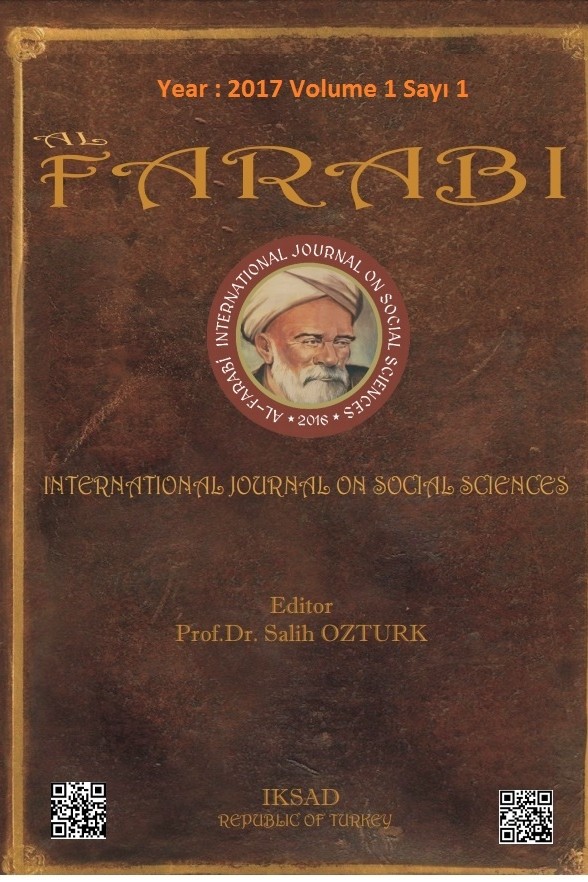TÜRKİYE'DE KURUMSAL SOSYAL SORUMLULUK İLETİŞİMİ: 5 BÜYÜK HOLDİNGİN WEB SİTELERİNDEN KANITLAR
Kurumsal sosyal sorumluluk kavramı ve uygulamaları son yıllarda şirketlerin gündemindeki en önemli konulardan biridir. Bu nedenle kurumsal sosyal sorumluluk ile ilgili konular literatürde oldukça ilgi görmektedir. Türkiye'de kurumsal sosyal sorumluluğa ilişkin yapılan çalışmaların daha çok hedef grupların KSS algılarına odaklandığı görülmektedir. Ancak, firmaların kurumsal sosyal sorumluluk raporlamalarında paydaşlarına söylediklerinin içeriğini ele almada araştırma eksikliği bulunmaktadır. Dolayısıyla bu çalışmanın amacı, Türkiye'nin önde gelen 5 holdinginin web sitelerinde KSS ile ilgili ele aldıkları konuların içeriğini analiz etmektir. Araştırmaya ilişkin veriler Türkiye’de faaliyet gösteren 5 büyük holdingin web sitelerinden sağlanmıştır. Örnek olay incelemesine bağlı olarak bu holdinglerin web siteleri ve raporları niteliksel içerik analizi ile incelenmiştir. İlk olarak, holdinglerin web siteleri incelenmiş, raporlara ulaşılmış ve raporlarda firmaların kurumsal sosyal sorumluluklarına ilişkin ifadeleri tespit edilmiştir. Daha sonra elde edilen ifadeler tasnif edilmiş, paydaşlara göre kategorize edilmiş ve analiz edilmiştir.
Anahtar Kelimeler:
Kurumsal Sosyal Sorumluluk, İletişim, Türkiye
CORPORATE SOCİAL RESPONSİBİLİTY COMMUNİCATİON IN TURKEY: EVİDENCE FROM WEB OF 5 BİG HOLDİNGS
In recent years, the concept of corporate social responsibility and practices become one of the most important topics on the agenda of the companies. Therefore, corporate social responsibility has received considerable attention in literature. The extending literature in Turkey regarding corporate social responsibility has focused particularly on the CSR perceptions of target groups. However, there is a lack of research investigating the content of what firms are saying to their stakeholders in corporate social responsibility reporting. The aim of this study is to analyze the content of issues that leading holdings in Turkey are addressing on their websites regarding CSR. The data for this investigation is provided from the websites of the 5 big holdings, where operates their activity in Turkey. Depending on case study these holdings‟ web sites and their reports or annual reports examined with qualitative content analysis. Firstly, the websites of firms were investigated for statements regarding firms corporate social responsibilities in corporate social responsibility reporting and secondly the statements acquired were sorted, categorized by stakeholders and analyzed.
Keywords:
Corporate Social Responsibility, Communication, Turkey,
___
- Bowen, H. R. (1953). Social Responsibilities of the Businessman (Harper and Row, New York).
- Burke, L. and J. M. Logsdon: 1996, ‘How Corporate Social Responsibility Pays Off’, Long Range Planning 29(4), 495–502.
- Carroll, A. B. (1979). A Three Dimensional Conceptual Model of Corporate Social Performance’, Academy of Management Review 4(4), 497–505. doi:10.2307/257 850.
- Carroll, A. B. (1991). The Pyramid of Corporate Social Responsibility: Toward the Moral Management of Organizational Stakeholders’, Business Horizons34(4), 39–48. doi:10.1016/0007-6813(91)90005-G.
- Carroll, A. B. (1999). Corporate Social Responsibility: Evolution of a Definitional Construct’, Business & Society 38(3), 268–295. doi:10.1177/000765039903800303.
- Castelo Branco, M., & Rodrigues Lima, L. (2006). Communication of corporate social responsibility by Portuguese banks: A legitimacy theory perspective. Corporate Communications: An International Journal, 11 (3), 232-248. doi: 10.1108/13563280610680821.
- Çizakça, M. (2000). A history of philanthropic foundations: The Islamic world from the seventh century to the present. Boğaziçi University Press.
- Çizakça, M. (2006). Osmanlı Dönemi Vakıflarının Tarihsel ve Ekonomik Boyutları. Türkiye’de Hayırseverlik: Vatandaşlar, Vakıflar ve Sosyal Adalet Araştırması, TÜSEV, İstanbul.
- Donaldson T ve Preston L.E. (1995), “The Stakeholder Theory of the Corporation: Concepts, Evidence and Implications”, Academy of Management Review, 20 (1), 65-91.
- Du, S., Bhattacharya , C., & Sen, S. (2010). Maximizing Business Returns to Corporate Social Responsibility (CSR): The Role of CSR Communication. International Journal of Management Reviews, 12 (1), 8-19. doi: 10.1111/j.1468-2370.2009.00276.x.
- Hartman, L.P., Subin, R.S., & Dhanda, K. (2007). The communication of corporate social responsibility: United States and European Union National Corporations. Journal of Business Ethics, 74, 373-389. doi: 10.1007/s10551-007-9513-2.
- Hill, R. P. (1994). Bill Collectors and Consumers: A Troublesome Exchange Relationship’, Journal of Public Policy & Marketing 13(1), 20–35.
- Maignan, I. and D. Ralston. (2002). ‘Corporate Social Responsibility in Europe and the US: Insights from Businesses’ Self Presentations’, Journal of International Business Studies 33(3), 497–514.
- McWiliams, A.& Siegel, D. (2001), ”Corporate Social Responsibility: A Theory of the Firm Perspective.” Academy of Management Review, 26:117-127.
- McWilliams, A., Siegel, D. S., & Wright, P. M. (2006). Corporate Social Responsibility: Strategic Implications. Journal of Management Studies , 43 (1), pp. 1-18.
- Porter, M. E. and M. R. Kramer: 2002, ‘The Competitive Advantage of Corporate Philanthropy’, Harvard Business Review80(12), 56–65.
- Singer, A. (2008). Charity in Islamic societies. Cambridge University Press.
- Schneider, A.M., Stieglitz, S., & Lattemann, C. (2007). Social Software as an Instrument of CSR. Proceedings of ICT, Transparency and Social Responsibility, Lisbon.
- Snider, J., Hill, R. P., & Martin, D. (2003). Corporate Social Responsibility in the 21st Century: A View from the World's Most Successful Firms. Journal of Business Ethics , 48 (2), pp. 175-187.
- ISSN: 2564-7946
- Yayın Aralığı: Yılda 3 Sayı
- Başlangıç: 2016
- Yayıncı: İktisadi Kalkınma ve Sosyal Araştırmalar Derneği
Sayıdaki Diğer Makaleler
Halep ve Civarında Hintli Tüccarlar ve Yerleşim Yerleri (16. ve 17. Yüzyıllar)
COVİD-19’UN NEDENLERİ ALGISI İLE COVİD-19 KORKUSU ARASINDAKİ İLİŞKİ ÜZERİNE BİR İNCELEME
Okan Anıl AYDIN, Sibel ORHAN, Muhammet GÜMÜŞ, Necibe KAYA, Ezgi MAHANOĞLU
TÜRKİYE'DE KURUMSAL SOSYAL SORUMLULUK İLETİŞİMİ: 5 BÜYÜK HOLDİNGİN WEB SİTELERİNDEN KANITLAR
KÜRESELLEŞME KAVRAMININ KÖKENLERİ
